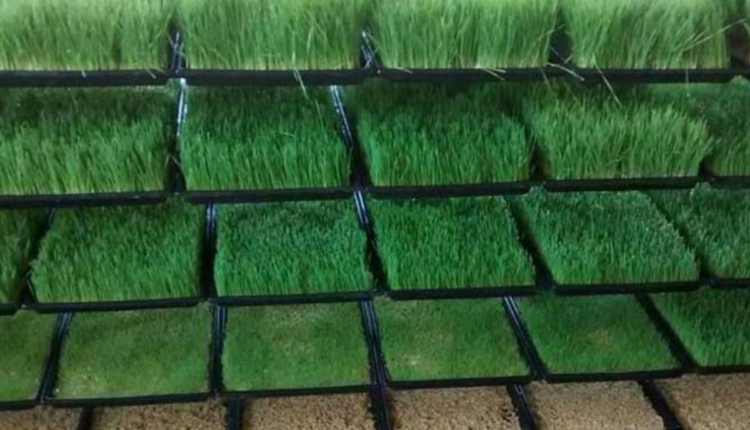Green Fodder Cultivation: How Green Fodder Cultivation Changed the Lives of Dairy Farmers in Coastal India
Green Fodder Cultivation has helped dairy farmers in Karnataka overcome fodder shortages and high costs, while improving their income and cattle health.
Dairy farmers in the coastal region of Karnataka face a severe shortage of green fodder. This problem is becoming bigger day by day for these farmers, as they mainly depend on purchasing paddy straw from nearby districts (which are 200 km or more away). Getting the fodder and storing it properly becomes a big challenge. Along with this, timely delivery of fodder and high transportation costs also create additional difficulties for farmers.
This problem has the worst impact on the health and productivity of cattle, as it becomes difficult for them to get adequate nutrition due to poor fodder resources. This situation becomes more serious especially for those farmers who have limited land and resources. This problem was faced by a farmer from Honavar, who used to raise two small indigenous cattle of Malnad Gidda breed.
Technical help for improving Green Fodder
To find a solution to these serious problems, the farmer was given 350 root cuttings of CO-5 (Hybrid Napier) in April 2022. He planted these cuttings in an area of 1000 square meters. This not only solved the problem of fodder, but also took an important step towards self-sufficiency in green fodder cultivation. Along with this, the farmer also received scientific technical guidance on green fodder cultivation, which gave him the right direction for better methods of farming and more production.
Self-reliance through Green Fodder Cultivation
From July 2022, the farmers started harvesting about 3-5 kg of fresh green fodder per day. They completely stopped buying fodder from outside and are now completely self-reliant in Green Fodder Cultivation. This change not only ensured their fodder supply, but they are now able to nourish their cattle well with fresh and nutritious green fodder, which has also increased the productivity of their animals.
They have one lactating cow, which gives four liters of milk per day, which they use to make ghee. This ghee is then available in the market for sale to consumers. As a result, they are now earning a net profit of Rs 8,000 per month. Also, they have generated employment of 50 man-days per month on their farm, which is benefiting not only their family but also the people around them.
Energy Saving and Use of Biogas
Another major benefit of Green Fodder Cultivation is that they now generate biogas from their animal dung, which is sufficient for their daily culinary use. Through this process, they are saving Rs 8,000 per year on LPG cylinder expenses, which has not only reduced their expenses but is also making them more financially self-reliant.
Spreading Green Fodder Cultivation in the Community
After this success, the farmer gave green fodder seeds to about 10 farmers around him. Thus, he spread this improved variety of green fodder in the surrounding areas, making more farmers benefit from this technological intervention. This move not only increased his own income but also promoted green fodder cultivation in the entire community.
Lessons and Messages from Green Fodder Cultivation
This story proves that the right technological intervention and innovation can change a farmer’s life. Green Fodder Cultivation has not only made this farmer self-reliant but has also increased his income. It is a model that can become a source of inspiration for other farmers.
This journey of the farmer shows how innovation and scientific approach in agriculture can change the entire agricultural landscape with small changes. His experience proves how much potential is hidden in finding and implementing solutions according to local conditions.
The Future of Green Fodder
The efforts made towards Green Fodder Cultivation to bring a big change in the agriculture sector have proved that this technological intervention can become a model for other farmers as well. If more farmers move towards Green Fodder Cultivation, it will not only increase their income but will also improve the health and productivity of the animals.
There is no doubt that Green Fodder Cultivation is an important step, which can make dairy farmers self-reliant as well as change the agricultural scenario of the entire region.
Conclusion
This story teaches us that change in the agriculture sector is possible with innovation and technological intervention. Measures like green fodder cultivation not only help make farmers self-reliant but also improve their standard of living. If other farmers also move in this direction, it can prove to be a new turning point for Indian agriculture.
Contact details: If farmers want to share information or experiences related to farming with us, then they can do this by calling us on the phone number 9599273766 or by writing an email to [email protected] or by sending your recording. Through Kisan of India, we will convey your message to the people, because we believe that if the farmers are advanced then the country is happy.



